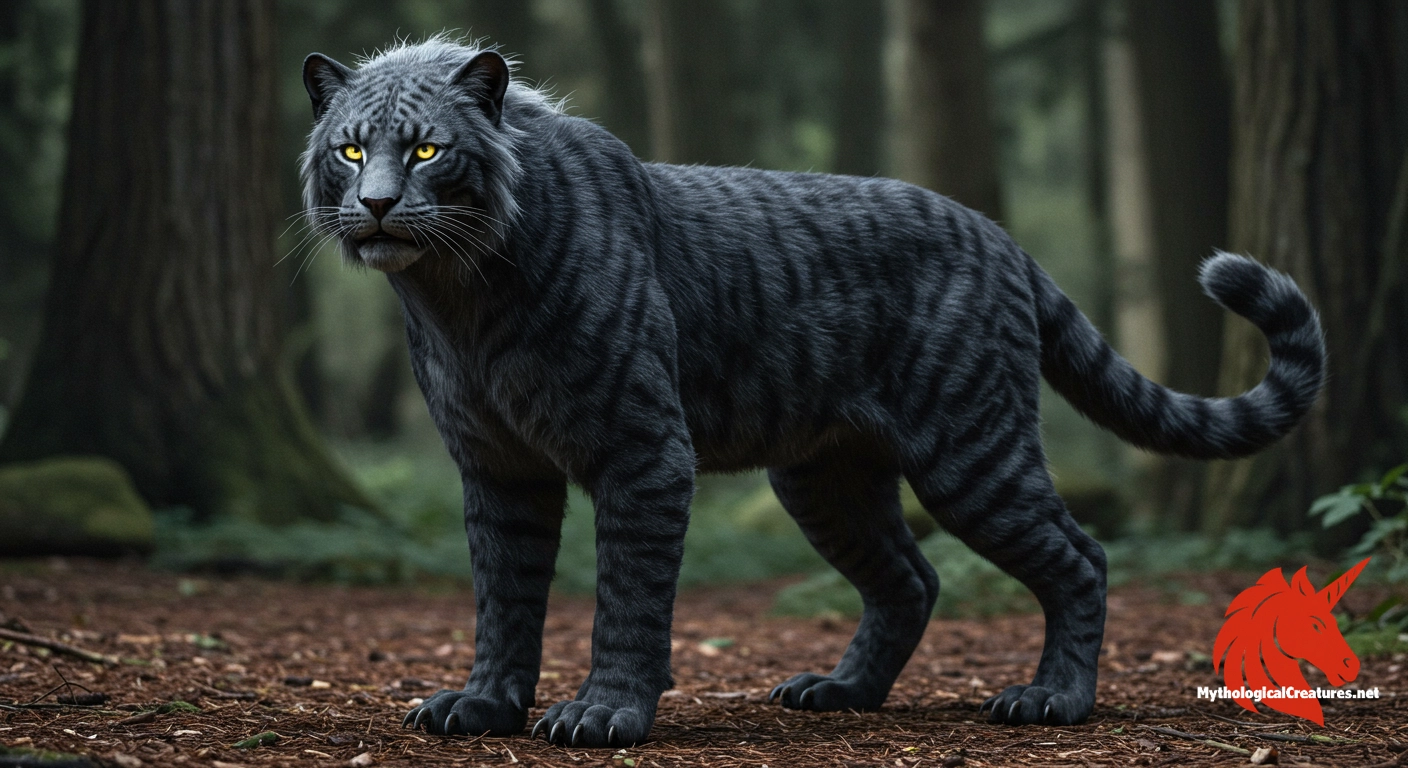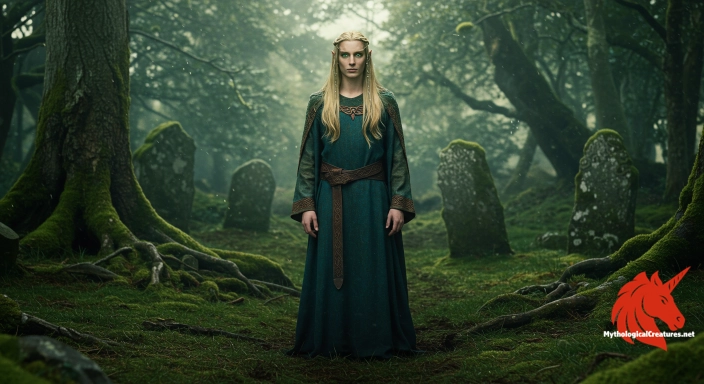Wampus cat: The Wampus cat is a legendary, cat-like creature from American folklore known for its variable and enigmatic appearance.

Wampus cat
Wampus cat - Represents the ambiguity of nature and the diverse cultural interpretations of the supernatural in American communities.
Origins & First Encounters
The legend of the Wampus cat is a fascinating embodiment of American folklore, woven into the fabric of rural storytelling and the mystique of the untamed wilderness. Its origins are ambiguous, emerging from a confluence of Native American, Southern, and Appalachian narratives that colour its character with both reverence and levity. Early attestations suggest that travellers and settlers, in the glow of campfires and on long, isolated journeys, first whispered of a mysterious, cat-like entity roaming the deep forests. The creature’s presence in these early accounts reflects a collective instinct to personify nature’s unpredictability and the lethal beauty of the wild. Over time, the Wampus cat has become a multifaceted symbol, embodying both the terror of unknown predators and the humour found in exaggerated tales of the night. Its story has been passed down orally, each retelling adding layers that echo the values and fears of its community. The folklore surrounding it encapsulates an enduring respect for nature’s darker aspects, while also offering a playful nod to the absurdities of myth. The timelessness of its lore is underlined by the creature’s ability to adapt its image—becoming at once a fearsome beast, a mysterious guardian of the forest, and a playful caricature in local jokes. Its layered history makes the Wampus cat a compelling study of how myth evolves to mirror society’s changing relationship with its environment. In every generation, the creature is reborn in retellings that bind the past with the present, underscoring its role as a cultural touchstone.
Source Texts & Tale Variants
Historical accounts of the Wampus cat are derived from a diverse range of sources, including early newspaper clippings, travel diaries, and oral traditions transmitted from one generation to the next. Written records that surfaced in the 19th and early 20th centuries echo the creature’s ambiguous nature and serve as an invaluable archive of regional mindset. Folklorists and local historians have collected numerous variants, each rooted in the unique cultural contexts of different communities. Many of these accounts were recorded in journals and local anthologies that sought to document the eerie phenomena encountered in the American wilderness. The creature’s narrative appears in local folklore compilations where its description oscillates from a spectral panther to a comically oversized cat with human-like mischief. Various storytellers, using differing details, have contributed to a mosaic of legends that transcend a single, static interpretation. Some accounts emphasise the Wampus cat’s fierce predatory traits, while others suggest it has a playful, almost mischievous side. Even though primary sources are intermingled with myth and regional lore, they collectively exemplify how communities have historically used such tales to explain the mysteries of the natural world. This rich tapestry of sources not only documents a creature of uncertainty but also highlights the evolution of American folklore over time.
Form & Powers
The physical descriptions of the Wampus cat are as mutable as the folklore itself, ranging from terrifying to intriguingly whimsical. It is frequently depicted with a robust, muscular frame that speaks of an animal born to roam the shadowy depths of vast forests. In some narratives, its coat is described as mottled with streaks of dark and light, enabling it to blend seamlessly into the night. Many accounts emphasise its luminous eyes that seem to burn with an eerie, otherworldly glow, giving the creature a haunting presence. Exaggerated features such as tufted ears, a sweeping mane reminiscent of a wild lion, or even multiple tails lend a fantastical quality to its appearance in some retellings. Despite these dramatic attributes, there are versions where the creature appears surprisingly agile and sleek, moving with a grace that belies its size. In keeping with its chameleon-like nature, reports often attribute human-like expressions to the cat, suggesting a bridge between animal instinct and sentient mystery. Such a broad spectrum of details—from intimidating scale to almost caricature-like quirks—has ensured that the Wampus cat remains a compelling enigma in the world of folklore. Its variability not only enhances its mythic appeal but also mirrors the storyteller’s intent to evoke both awe and a wry sense of humour when recounting encounters. Ultimately, the creature’s physical form is as dynamic as the landscapes it is said to inhabit, reinforcing its elusive and multifaceted identity.
Regional Faces
The depiction of the Wampus cat shifts markedly from one region to another, reflecting local customs and environmental influences. In the Appalachian foothills, it is often portrayed as a sinister symbol of the untamed wilderness, a nocturnal predator whose presence evokes both fear and respect. Farther south, tales sometimes infuse the creature with an almost surreal playfulness, where it becomes a figure of both caution and comic relief in local lore. In areas with a strong Native American influence, the creature is sometimes linked to spiritual omens or mystical guardians of the forest. Variations in its description—from a shadowy beast to a more exaggerated, almost mythical feline—underscore the regional diversity of its legend. The differences in portrayal are influenced by the local history, the interplay of African American and settler narratives, and the community’s relationship with nature. In certain communities, the creature is even celebrated during festivals or used in local art, reflecting an embrace of its enigmatic qualities. These regional adaptations ensure that while the name remains constant, the interpretation of the Wampus cat evolves to meet the cultural and environmental context of each area. The regional diversity of its legend underscores how folklore can incorporate a creature into multiple local identities, making it a chameleon in both appearance and symbolic meaning.
Cultural Parallels
The mystique of the Wampus cat finds intriguing parallels with other mythological creatures across the globe, forming a fascinating cross-cultural dialogue. Similar to the Celtic Cat Sìth and European werecat legends, the Wampus cat embodies the duality of benevolence and malevolence that is often found in feline myths. Its portrayal oscillates between that of a fearsome predator and a mischievous trickster, much like other shape-shifting creatures who blur the boundary between the animal and human realms. In various traditions, mysterious felines serve as guardians of the supernatural, a role that the Wampus cat also seems to adopt in certain regional narratives. Elements of its myth resemble aspects of folklore seen in South American and African stories, where wild cats are imbued with an almost magical quality. Cross-cultural analysis reveals that many societies have sought to explain the inexplicable by turning to creatures that symbolise the unpredictable nature of the wild. Like the werewolf or other hybrid animals in global myth, the Wampus cat often mirrors society’s underlying anxieties about the unknown in the natural world. Such cultural comparisons highlight an archetype: an animal that is at once a literal creature and a metaphor for unpredictability and transformation. In this light, the Wampus cat sits comfortably within a pantheon of legendary beasts whose traits are as diverse as the human experience itself. This comparative view underscores the universality of myth-making, where themes of danger, wonder, and humour traverse geographical and cultural boundaries.
Legacy & Modern Evolution
Over time, the Wampus cat has undergone a remarkable transformation, evolving from a mere subject of whispered legends to a celebrated icon in modern popular culture. Early portrayals emphasised its role as a shadowy, enigmatic presence in the forests, a symbol of nature’s wild and unpredictable spirit. As the legend permeated local folklore, it absorbed contemporary influences, morphing into a creature that could be both a figure of dread and a source of light-hearted parodies. In modern reinterpretations, artists and writers blend horror and humour, turning the Wampus cat into a versatile symbol that appeals to a broad audience. Its image has been rediscovered in comic books, films, and digital media, each medium offering a fresh perspective on its multifaceted character. Community festivals, roadside attractions, and local art exhibitions have resurrected the creature as a cultural mascot, celebrating its unique place in American myth. This evolution represents more than a mere rebranding; it reflects society’s ongoing fascination with the liminal spaces that straddle reality and imagination. As academic interest in cryptozoology and myth deepens, the Wampus cat stands as a testament to the dynamic nature of folklore, ever adaptable to shifting cultural landscapes. Ultimately, its enduring legacy reminds us of the power of myth to evolve with the times and to continue inspiring wonder in each new generation.
Interesting Fact
An intriguing aspect of the Wampus cat is its dual representation in folklore, where it is simultaneously feared as a deadly predator and celebrated as a figure of bizarre, almost humorous enchantment.
Quick Creature Info
Origin:
Associations:
Our Mythic Legendary Rating:

Habitat:
Supernatural Powers:
Physical Attributes:
Abilities:
Behavior:
Lore:
References
Discover Another Mythical Legend You May Not Have Heard Of?
Uncover the mysteries of ancient folklore and expand your knowledge of legendary beings from cultures around the world.
Dare to Meet the Tuatha Dé Danann....
Mythical Disclaimer: The images and data on this site are derived from various historical and literary sources, but we have found that many myths often have multiple versions and interpretations across references, sometimes contradictory. As a result, these creature depictions are artistic interpretations—imaginative blends of folklore, legend, and a dash of AI guesswork. Because creature descriptions vary widely, our illustrations and accompanying information represent our best effort to honor mythology while bridging creative gaps. Enjoy these interpretations—just remember, we've done our best to respect the stories and validate available data, but in the realm of mythology, details often shift, imagination leads the way, and nothing is ever set in stone!
Curated by the Mythological Creatures Team (rev. May 2025)
